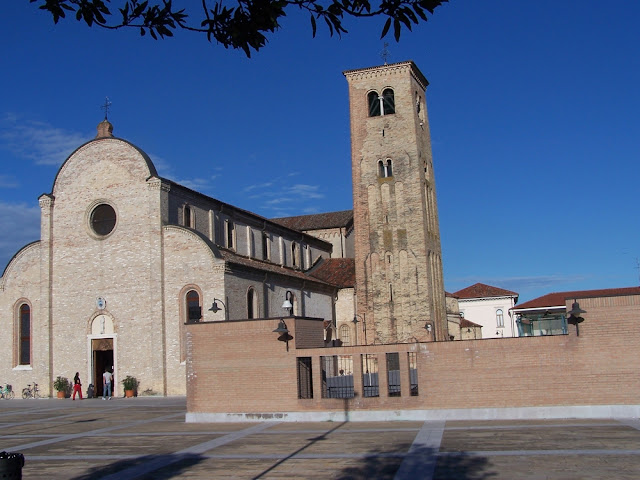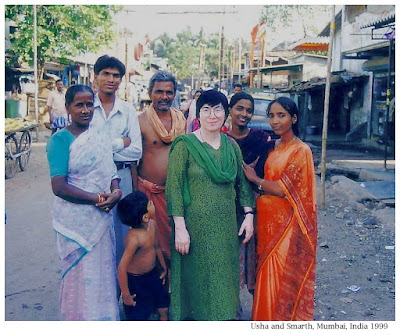The north Italian town called Schio, where I live, has a one thousand-years' old water-canal. It starts from Leogra river and ends in another river called Timonchio. On its way it passes through different suburbs to the north and south of Schio, going underground for a brief part in the city centre. It is called Roggia Maestra (Master Canal).
Over the centuries, this canal has played a key role in the city’s life and history. Today, it has lost its importance for the city’s industries, however it accompanies some of the most beautiful walking areas around the city and continues to be important for the farmers.

I am always interested in discovering the history of old places. This post is a result of my search for information about this canal. I had found some information on internet, but most of it came from some books in the Schio library. There are some bits of information which are still missing.
The River-Crossing Canal
Schio’s water canal has one peculiarity, which I think is rare among the water-canals – it comes out from one side of the river, after a few kilometres it crosses over the river in a tube-bridge and then continues on the other side of the river. Have anyone heard of any such river-crossing canal in another part of the world? Do share information in the comments below.
Originally there were two water canals on the river Leogra. One was built on its western bank along the little town of Pieve Belvicino, a few kilometres to the north of Schio and it ended in a place called Ponte Canale (canal bridge), which had a wood-bridge for crossing the river. This was the old canal built around 1000 AD. The image below shows this part of the canal.

The second canal one was located along the eastern bank of the river, starting near Poleo area at the northern edge of Schio. It was much longer, it proceeded to the south of Schio towards a suburb called Giavenale where it accompanied the river Timonchio for a distance and then joined it. This canal was probably built later (after 12th century) though I could not find specific details about its construction.
During the second half of the 19th century, when the industrialist Alessandro Rossi was setting up his wool factory in Schio, he decided to combine the two canals by building a tube bridge because there was not enough water in the second canal.
Thus, the western branch of the canal in Pieve was deviated and connected through a tube bridge to the eastern canal. (The image below shows the starting of the tube-bridge where the canal from Pieve crosses over the other side).
On the other side, ruins of an old sawmill covered with vegetation marks hide the exit of the tube-bridge. At this point some water-basins and closes are also located, so that at times of high water levels the excess water can be diverted back to the river. (In the image below, water coming out of the tube-bridge on the eastern side).

Northern Part of the Canal in Pieve Belvicino
“Pieve” was the first important urban settlement of the Schio area. It had come up during the first millennium on the western bank of Leogra. It was connected to the settlements of Magre, San Vito, Malo and Vicenza on the south through a Roman road. It had the mother-church, an old fort and a tower. The people living on the mountains around it, came down here to sell their wool and dairy products. It still has an area called Valle dei Mercanti (Valley of the merchants) from those early days. At that time, Schio was a little settlement, cut off from the Roman road by the Leogra river. (The image below shows the Pieve part of the canal)

The Republic of Venice (Serenissima) and the Holy Roman empires (from Charles the Great to Fredrick Redbeard) competed for power in this area. In the 11th century, it belonged to the Malatraversi family, the Counts of Vicenza. At that time, the old St. Mary church of Pieve was the principal church of this whole area. The first water canal of Pieve probably pre-dates this period. It still passes next to that old church, though it seems that its specific course was changed over the centuries. It provided hydraulic energy through the use of water-wheels for setting up flour mills and wood-sawing mills. It also provided water for agricultural use.
Building the canal must have needed a lot of money – who had paid for it? The church or the Malatraversi family? There are no clear answers to this question, though it seems likely that the costs were covered by the noble family.
Schio's development had suffered as it was located between two rivers, Leogra on the east and Timonchio on the west. It only had small foot-bridges over the two rivers. Probably a carriage-bridge on Timonchio was built in 14t-15th centuries, which allowed it to be connected to Thiene and Vicenza. Thus, In late 15th century, a new cathedral was built in Schio while Pieve lost some of its importance. The arch-priest also shifted from the old St Mary church of Pieve to the new Duomo church of Schio.
The area had many flour mills and weavers, which used the force of the water-torrents coming down from the mountains. In 18th century, the "Council of 150" approved the production of "Panni Alti" (fine clothes) in the valleys around Schio, so this activity increased. In the 19th century, wool mills arrived in the city.
Among the wool factories set-up in Schio, there was the factory of Francesco Rossi. His son, Alessandro Rossi, took over the factory management in 1849 and slowly became the biggest wool producer. (In the image above the abandoned Rossi wool factory in Pieve, which once had its own rail line).
Pieve regained some of its importance in 1870s when a Rossi wool factory was opened there along the old canal. Electricity had not yet arrived and thus wool-factories used the water-power to run their machines. However, by the end of the 19th century, gradually steam and hydro-electric powers had replaced the simple hydraulic power of the water-flow and thus the canal slowly lost its importance for the wool factories.
The Canal in Schio’s Centre
The water-canal in Schio was built in the 12th centuy CE. Most of the early churches of Schio including the Duomo came up two centuries later along its western bank. The Schio part of the canal starts in the northern end of the city where the Gogna torrent coming down from San Martino merges with Leogra river.
Soon after it enters the old Cazzola wool mill, which was converted into a war hospital during the First World War, where a young Ernest Hemmingway had worked for a few months as an ambulance driver. (In the image below, the old Cazzola mill, where my mother-in-law also used to work)

The canal then proceeds towards the Rossi and Conte wool mills, which were also built along its western bank, near the city centre. Building of the big wool mills brought immigrants from surrounding countryside to Schio. My wife's grand-father had also arrived in Schio to work in the Rossi wool-mill around the end of 19th century. Thus, in late 19th and early 20th century, new houses were built and the urbanisation of Schio increased. New housing areas for the mill-workers were built on the agricultural lands on the eastern bank of the canal. Thus, new bridges were also built in the city and some parts of the canal in the city centre were covered and it became underground. (The image below shows the canal under the old Conte wool mill).

Some of the old names of city areas are the only memory of those early days of urbanisation along the canal. For example, Via Pasini, the main street in the centre of Schio today, was once called Via Oltreponte (Beyond the Bridge street) as it had a bridge over the canal - this part of the canal was later covered and today many persons passing from there are not aware of the waters passing underneath the street.
Towards the end of 20th century, with the advent of a new phase of the globalisation, the wool factories of Schio gradually lost their markets and closed one after another. With urbanisation of the past 2 centuries, most of the agricultural use of the canal water had also decreased. Thus, the water-canal has lost some of its importance.
The last part of the canal located in the city centre of Schio still has the old “lavanderia”, the community washing space, where a wooden sculpture of a washer-woman remembers those days when women used to gather here to wash clothes.

Southern Part of the Canal
After passing through the Schio city centre, the canal comes out near Via Paraibo and proceeds to the rural part of the periphery along Via Mollette. The old ruins of the Cavedon sawmill are located here. The last tract of Via Mollette running along the canal has been converted into a beautiful walking/cycling area (in the image below).
From here, the canal comes closer to Timonchio torrent and runs alongside it to the area known as Giavenale-Maglio. Another new cycling and walking path has been created along this part of the canal. (The canal in Giavenale in the image below)
A few kilometres down this walking/cycling path, finally the water-canal ends in Timonchio. The image below shows the last part of the canal along the cycling-walking path).
Conclusions
Today the economic and industrial importance of the old water-canal of Schio has decreased, yet it has become important in other ways. Evolution has taught human beings about the importance of water. Schio and its surroundings are full of beautiful walking and cycling areas that are located next to its two rivers, Leogra and Timonchio, and its water-canal. It also continues to supply water for agricultural use.
Perhaps one day the cycle of the history will turn once again and the water-canal of Schio will restart play an important role in the city’s economic life. Till then, the aesthetic pleasure of its beauty and its importance for the nature are its contribution to the city life.
Researching the history of the canal and exploring its passage through the city was a rewarding exercise. It made me aware of how our landscapes change along the passage of time and events. For thousands of years, this landscape was only changed by the nature, but over the last few centuries, humans have accelerated the pace and scope of this change. Schio and its surroundings are beautiful and I am glad that the city could use some of those changes to improve its beauty through the old canal.
(An older version of the post was first written in June 2021 in my blog)



.jpg)
.jpg)


.jpg)

.jpg)








































